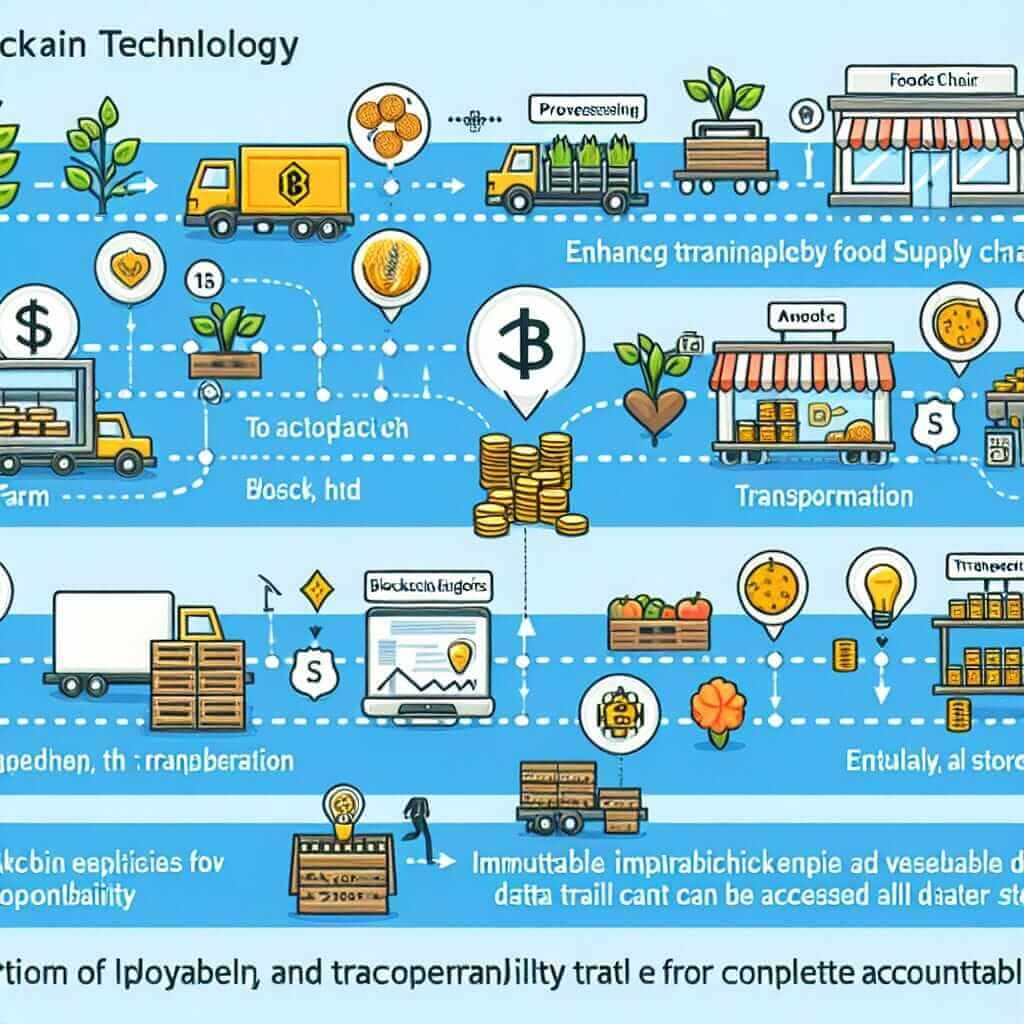The IELTS Reading section assesses not only your ability to understand and interpret written texts but also your proficiency in identifying relevant information and answering questions accurately. In recent times, the topic “How is blockchain technology influencing global food systems?” has gained momentum both in global discussions and in academic assessments, making it a potential subject for an IELTS Reading exam.
This topic’s relevance stems from the growing importance of food safety, traceability, and sustainable practices. Blockchain technology possesses the potential to revolutionize global food systems by ensuring transparency and accountability in the food supply chain. Understanding this topic in depth will benefit you in mastering the Reading section of the IELTS exam.
This guide aims to provide a practice reading test, analysis of common mistakes, vocabulary enrichment, grammar insights, and expert tips to excel in your IELTS Reading exam.
Practice Reading Test
Passage: How Blockchain Technology is Transforming Global Food Systems
Section 1: Introduction to Blockchain in Food Systems
Blockchain technology, primarily associated with cryptocurrencies, is making its way into global food systems. Farmers, supply chain managers, and consumers alike are beginning to appreciate the benefits of blockchain in ensuring food safety, traceability, and sustainability.
By definition, blockchain is a decentralized digital ledger that records transactions across multiple systems securely. This technology’s application in food systems offers unparalleled benefits in monitoring food production, distribution, and sales, thereby preventing food fraud and ensuring product authenticity.
Section 2: Ensuring Food Safety and Traceability
One of the most significant advantages of blockchain technology in food systems is its ability to ensure food safety and traceability. Food recalls can be both expensive and damaging to a brand’s reputation. By recording every transaction on a blockchain, it becomes easier to trace a food product back to its origin, identifying all the intermediaries involved. This enhanced traceability aids in quickly pinpointing contamination sources and removing affected products from the supply chain promptly.
Section 3: Promoting Sustainable Practices
Blockchain technology also promotes sustainable practices within the food industry. By providing transparency, it allows consumers to make informed choices about the products they purchase. For instance, the provenance of seafood can be thoroughly tracked, ensuring it is sustainably sourced. Additionally, blockchain incentivizes farmers and producers to adhere to sustainable farming practices to maintain market credibility.
Section 4: Challenges and Future Prospects
However, integrating blockchain technology into food systems is not without challenges. High implementation costs, lack of technical expertise, and scalability issues are some of the obstacles that need to be addressed. Despite these challenges, the future looks promising. Increasing awareness about food safety and sustainability is likely to drive wider adoption of blockchain technology across global food systems.

Questions
Multiple Choice
-
According to the passage, what is the primary purpose of blockchain in food systems?
- A. To increase cryptocurrency value.
- B. To enhance food traceability and safety.
- C. To reduce farming costs.
- D. To market products globally.
-
What does blockchain technology use to record transactions?
- A. Centralized digital systems.
- B. Decentralized ledgers.
- C. Paper-based records.
- D. Proprietary software.
True/False/Not Given
-
Blockchain technology can help in quick identification and removal of contaminated products.
-
Blockchain makes it impossible for food fraud to occur.
Matching Information
Match the following benefits with the sections of the text where they are mentioned:
- Ensuring food safety and traceability
- Promoting sustainable practices
- Challenges and future prospects
A. Section 1
B. Section 2
C. Section 3
D. Section 4
Sentence Completion
- Blockchain technology in food systems results in ___, which allows for quicker identification and removal of contaminated products.
Answer Keys
-
- Answer: B
- Explanation: The passage emphasizes that blockchain’s primary purpose in food systems is to enhance food traceability and safety.
-
- Answer: B
- Explanation: Blockchain uses decentralized ledgers to record transactions.
-
- Answer: True
- Explanation: The passage clearly states that blockchain aids in quickly pinpointing contamination sources and removing affected products.
-
- Answer: False
- Explanation: While blockchain helps in reducing food fraud, it does not make it impossible.
-
- Answer: enhanced traceability
- Explanation: The passage states that blockchain technology enhances traceability, leading to quicker identification and removal of contaminated products.
Common Mistakes
- Overlooking key terms: Ensure you understand terms such as “decentralized ledgers” and “traceability.”
- Misinterpreting True/False/Not Given questions: Carefully differentiate between “False” and “Not Given” based on the information provided.
- Matching incorrectly: Pay close attention to the section titles to correctly match information.
Vocabulary
- Traceability (noun) [ˌtreɪsəˈbɪlɪti]*: The ability to track the origin of a product.
- Transparency (noun) [trænsˈpærənsi]*: The quality of being easily seen through or detected.
- Sustainability (noun) [səˌsteɪnəˈbɪlɪti]*: The ability to be maintained at a certain rate or level.
- Decentralized (adjective) [ˌdiːˈsɛntrəˌlaɪzd]*: Distributed away from a central authoritative location.
- Provenance (noun) [ˈprɒvənəns]*: The place of origin of something.
Grammar Insight
Conditional Sentences
- Type: First conditional for real possible situations.
- Structure: If + Present Simple, will + Base form (e.g., “If blockchain is integrated, it will ensure traceability.”)
Example: If farmers adhere to sustainable practices, they will maintain market credibility.
Conclusion
Thorough preparation and practice are key to achieving a high score in the IELTS Reading section. Focus on enhancing your understanding of complex texts such as the intersection of technology and food systems. Pay attention to vocabulary, grammar, and common question types. Practice diverse reading materials and always review your mistakes to improve continually.
Remember, reading comprehensively and efficiently under timed conditions is crucial. Good luck!